I joined this forum a few years back and I recall back then, the Woodlore knife was seen as one of the best, if not the best choices. Since then the choice seems to have widened, and the Woodlore has become harder (and more expensive) to acquire.
Often newcomers wish to make a safe choice by simply using what the experts do, but sometimes we forget 'Bushcraft' is not a new subject. So here's a roundup of what a few famous experts have used over the years.
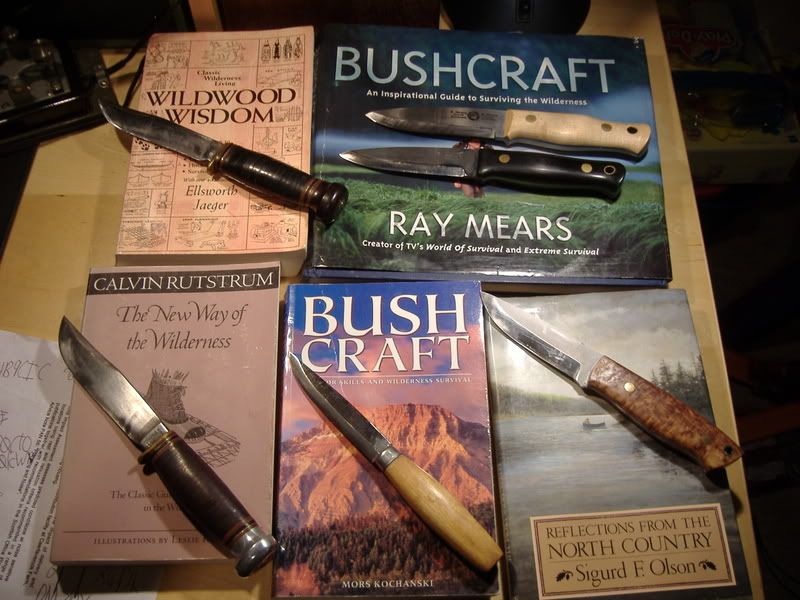
First up - the Woodlore. Designed by Ray Mears, made by Alan Wood. Wilkinson Sword also made similar but not identical Woodlores at the sword factory at Acton.
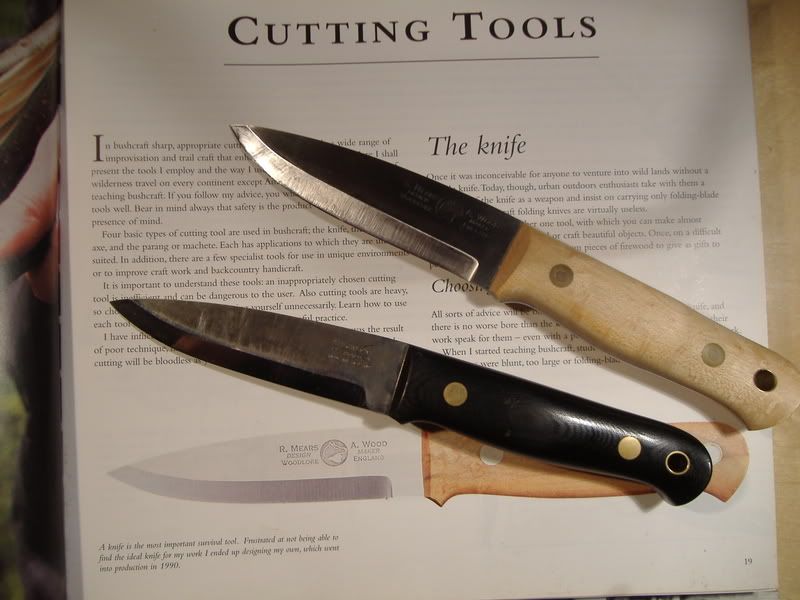
Its very good, but quite heavy and the blade is thicker than many prefer. The Alan Wood models have a fuller handle. All are 01 steel. I don't use mine much - I canoe on saltwater, I prefer a lighter knife and truth be told, they are too expensive to risk losing. Can't fault the design though.
Second - the Marbles 'Expert'
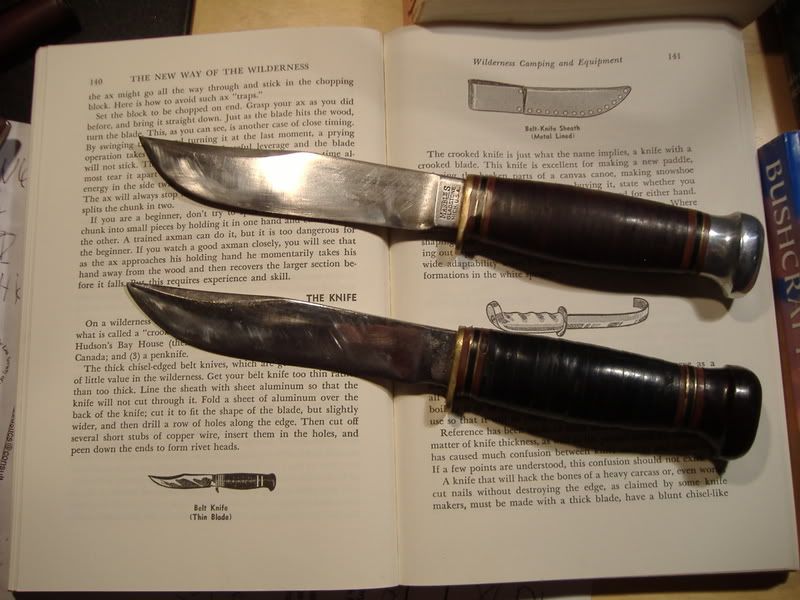
This is the exact model advocated by Cal Rutstrum, a very famous outdoorsman of the 1920s to 1960s. These are old knives - essentially turn of the century designs with stacked leather handles. You see similar models by various American and Sheffield makers. Ellsworth Jaeger (Wildwood Wisdom) and Bill Mason (Song of the Paddle) advocated the same design. It has a fairly thin 5 inch blade of very good carbon steel. Easy to sharpen. The two shown here are of the same design, but the one with the phenolic butt is of wartime manufacture - aluminium was needed for the war effort.
Nowadays unfashionable, but light and still a good knife.
Third - the Mora
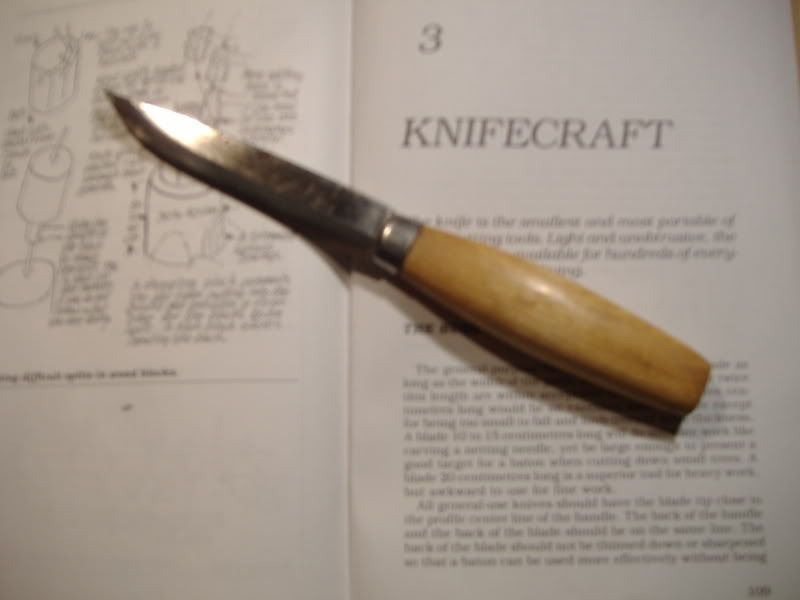
Choice of Mors Kochanski. The plastic handled versions may be more ergonomic but I like the 'number one' wooden handled model in his book. Made by Erikson or Frost, usually carbon steel, this one is laminated. Fantastic knives, do everything you need. Sheaths are plastic but practical.
Fourth- the Puuko - but I'm cheating a bit here:

Sigurd Olson was a deep thinking outdoorsman, roughly contemporary with Rutstrum. He's most famous for his books that focus on well, wilderness theology really. But he was accomplished outdoors and travelled thousands of wilderness miles.
He wrote: 'I own an old Finnish knife or puukko, the blade made from an old file, the handle and molded case of birch bark I have carried it for thousands of miles and it has never failed me. The well-tempered steel is hard enough to open a tin and still sharp enough to fillet a fish without needing retouching.....far more than a tool, that knife is to me a symbol of the spirit that went into the cabin, the canoes, and all things made by men...'
Puukkos have a stick tang and a birch handle so I am cheating here - this knife is really a cross between a traditional Finnish puukko and a modern woodlore type full tang knife. Like most mongrels it has 'hybrid vigour' and I like it a lot. It is of course the Enzo sold by Brisa in Finland in D2 steel with stabilised curly birch handles. A traditional puukko is also an excellent choice - if Sig Olsons never failed him, its unlikely yours will.
Bottom line - any of the above are good choices.
Often newcomers wish to make a safe choice by simply using what the experts do, but sometimes we forget 'Bushcraft' is not a new subject. So here's a roundup of what a few famous experts have used over the years.

First up - the Woodlore. Designed by Ray Mears, made by Alan Wood. Wilkinson Sword also made similar but not identical Woodlores at the sword factory at Acton.

Its very good, but quite heavy and the blade is thicker than many prefer. The Alan Wood models have a fuller handle. All are 01 steel. I don't use mine much - I canoe on saltwater, I prefer a lighter knife and truth be told, they are too expensive to risk losing. Can't fault the design though.
Second - the Marbles 'Expert'

This is the exact model advocated by Cal Rutstrum, a very famous outdoorsman of the 1920s to 1960s. These are old knives - essentially turn of the century designs with stacked leather handles. You see similar models by various American and Sheffield makers. Ellsworth Jaeger (Wildwood Wisdom) and Bill Mason (Song of the Paddle) advocated the same design. It has a fairly thin 5 inch blade of very good carbon steel. Easy to sharpen. The two shown here are of the same design, but the one with the phenolic butt is of wartime manufacture - aluminium was needed for the war effort.
Nowadays unfashionable, but light and still a good knife.
Third - the Mora

Choice of Mors Kochanski. The plastic handled versions may be more ergonomic but I like the 'number one' wooden handled model in his book. Made by Erikson or Frost, usually carbon steel, this one is laminated. Fantastic knives, do everything you need. Sheaths are plastic but practical.
Fourth- the Puuko - but I'm cheating a bit here:

Sigurd Olson was a deep thinking outdoorsman, roughly contemporary with Rutstrum. He's most famous for his books that focus on well, wilderness theology really. But he was accomplished outdoors and travelled thousands of wilderness miles.
He wrote: 'I own an old Finnish knife or puukko, the blade made from an old file, the handle and molded case of birch bark I have carried it for thousands of miles and it has never failed me. The well-tempered steel is hard enough to open a tin and still sharp enough to fillet a fish without needing retouching.....far more than a tool, that knife is to me a symbol of the spirit that went into the cabin, the canoes, and all things made by men...'
Puukkos have a stick tang and a birch handle so I am cheating here - this knife is really a cross between a traditional Finnish puukko and a modern woodlore type full tang knife. Like most mongrels it has 'hybrid vigour' and I like it a lot. It is of course the Enzo sold by Brisa in Finland in D2 steel with stabilised curly birch handles. A traditional puukko is also an excellent choice - if Sig Olsons never failed him, its unlikely yours will.
Bottom line - any of the above are good choices.

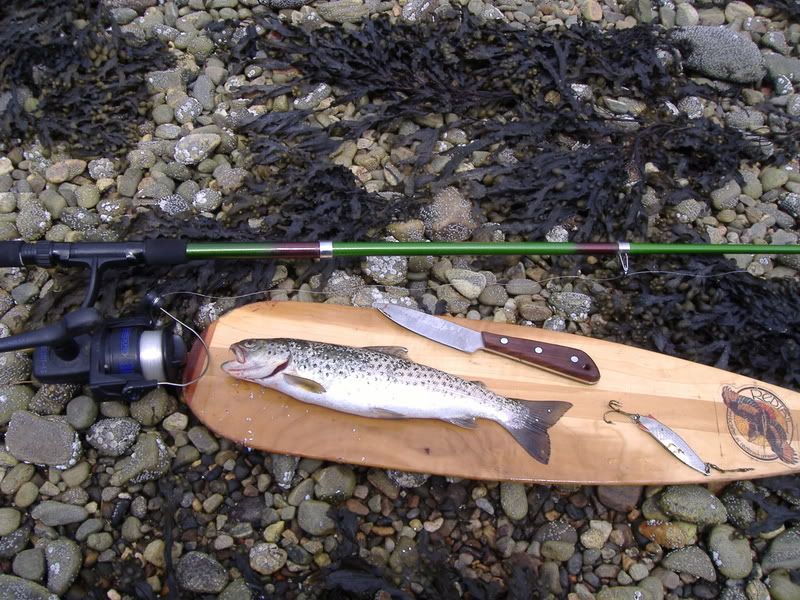
 I have found that with a hatchet and a small opinel for carving and food prep i just dont use it as much
I have found that with a hatchet and a small opinel for carving and food prep i just dont use it as much